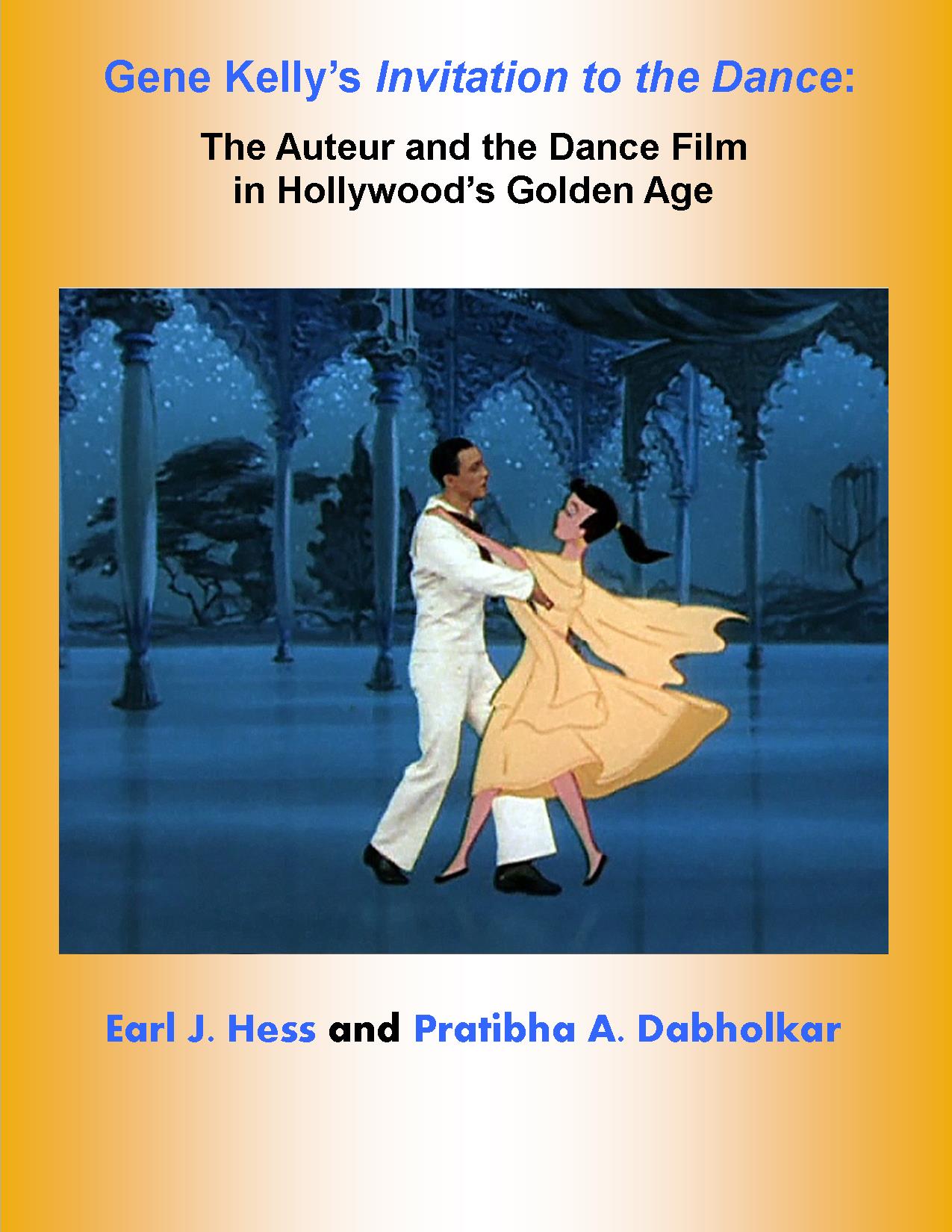Gene Kelly’s Invitation to the Dance: The Auteur and the Dance Film in Hollywood’s Golden Age
by Earl J. Hess and Pratibha A. Dabholkar
To order, go to: https://www.academia.edu/97343621/Gene_Kelly_s_Invitation_to_the_Dance
_The_Auteur_and_the_Dance_Film_in_Hollywood_s_Golden_Age
 “Earl
Hess and Pratibha Dabholkar have become our premiere
historians on the artistry of Gene Kelly. With this volume,
they have rescued a mostly forgotten film from obscurity,
demonstrating that even an actor at the top of his game
faced enormous difficulties achieving his artistic
vision. Hess and Dabholkar are masters of finding background
information that fleshes out how a film comes to be. This
volume is more than just a celebration of Kelly's
Invitation to the Dance; it is a snapshot of Hollywood
as the studio system was transforming and actor-producers
were gaining more strength in the industry.” --
Gerald R. Butters, Jr.,
author of From SWEETBACK to SUPER
FLY: Race and Film Audiences in Chicago's Loop
“Earl
Hess and Pratibha Dabholkar have become our premiere
historians on the artistry of Gene Kelly. With this volume,
they have rescued a mostly forgotten film from obscurity,
demonstrating that even an actor at the top of his game
faced enormous difficulties achieving his artistic
vision. Hess and Dabholkar are masters of finding background
information that fleshes out how a film comes to be. This
volume is more than just a celebration of Kelly's
Invitation to the Dance; it is a snapshot of Hollywood
as the studio system was transforming and actor-producers
were gaining more strength in the industry.” --
Gerald R. Butters, Jr.,
author of From SWEETBACK to SUPER
FLY: Race and Film Audiences in Chicago's Loop
“Coming on the heels of Hess and Dabholkar’s previous monographs on the MGM classic musicals Singin’ in the Rain and The Pirate, this book is a model of film scholarship that provides a day-to-day historical account, based on extensive archival research, of one of the most daring movies produced by MGM studios during the Golden Age of Hollywood. Gene Kelly’s Invitation to the Dance offers a lively discussion of the decisions made by Kelly in creating an anthology film composed of three narratives told through dance, not dialogue, and his approach to “cine-dance,” which offers the unique potential of dance filmed on a soundstage rather than a theatrical stage. Beyond the “making of” account of a single film, the book also investigates Kelly’s career, members of the Freed Unit, and most exceptionally the production of an American film overseas in Borehamwood Studios near London at a time when the Hollywood Big Eight sought to use funds frozen in Britain after the war. Detailing the hard facts of film production, script changes, and long-distance collaboration, the authors provide insight into the limited skills of the British studio system. A valuable contribution to film studies, Gene Kelly’s Invitation to the Dance will appeal to students and enthusiasts of the Hollywood musical, British film, and dance history.” -- Robert Neuman, author of From Hollywood to Disneyland: Walt Disney's Dream Park and the Influence of American Movies
“If you like Hollywood musicals, then you will love this book. If you care about dance and choreography, then this is the book for you. If you loved Hess and Dabholkar’s studies of Singin’ in the Rain and The Pirate, then you will find their new book an absolute delight. If you appreciate careful research, broad coverage, and clear prose, then you will totally appreciate Gene Kelly’s Invitation to the Dance: The Auteur and the Dance Film in Hollywood’s Golden Age.” -- Rick Altman, author of A Theory of Narrative
Background of the film: Gene Kelly’s film Invitation to the Dance (1956) represents this multi-talented dancer, actor, choreographer, director, and producer’s most heartfelt project. An all-dance feature film with no dialogue or narration, its three separate stories--two of which were made in England and a third that mixes live-action with animation--are told entirely in dance, with a special emphasis on ballet. Kelly made the movie as a way to bring elite dance to the common man, reflecting his political orientation as a solid New Deal Democrat. It is the ultimate example of the auteur at work in the history of the dance film.
Synopsis of our book: It is a comprehensive history of the making of this unique film. It includes the origin of the idea for the movie, the planning of the details, preproduction, filming in England with a cast and crew drawn from sixteen countries, continued filming in Hollywood, and postproduction coordinated across two continents. The book also fully covers marketing plans and implementation, the release of the film internationally, its reception by audiences in Europe and the United States, and its legacy, including how Kelly’s own view of the film changed over time. All of the film’s moments of success, as well as its faults, are due to the man who conceived the project, wrote the scenarios, starred in each of its segments, directed the film, choreographed everyone’s dances, and promoted the project internationally as homage to the world of dancing.